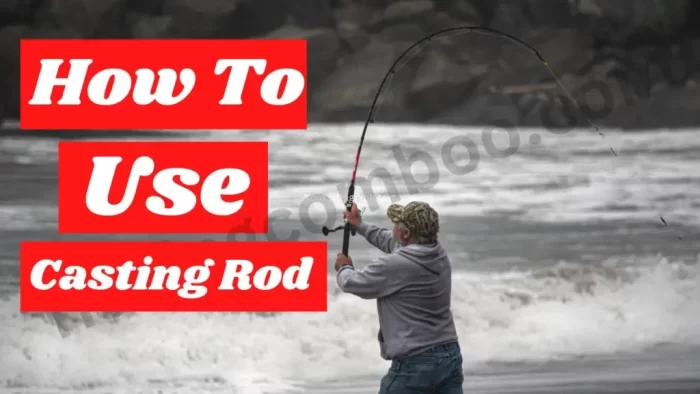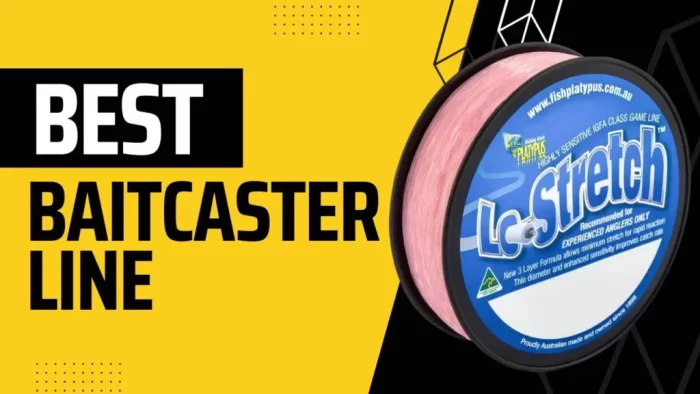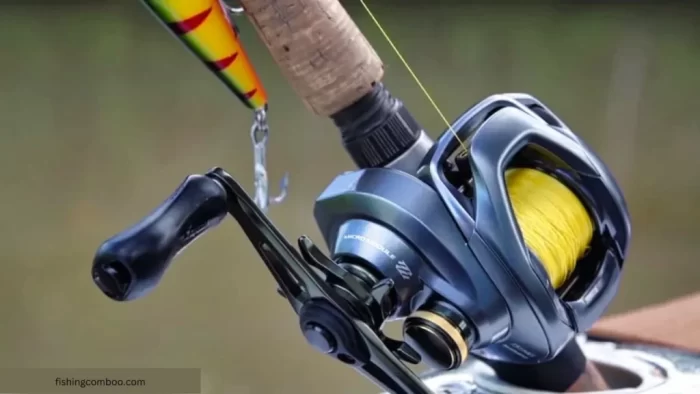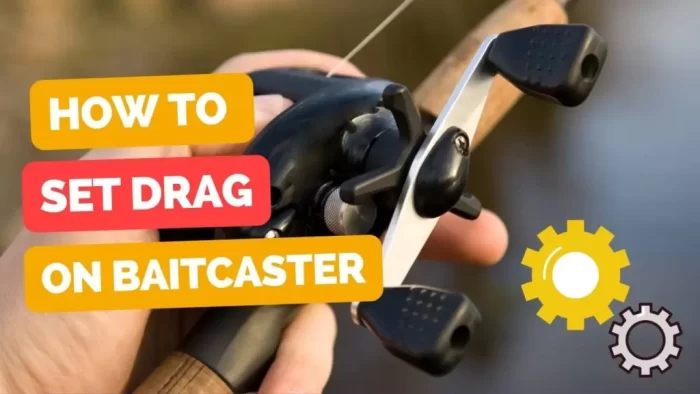
Baitcasters are one of the most versatile types of fishing reels out there. They can be used for a variety of different techniques and styles of fishing, making them a great choice for anglers who want to be able to mix things up.
So, how to choose baitcasting reel for you? It all comes down to understanding the different available features and then picking the reel that best matches your fishing needs.
However, many fishermen feel overwhelmed when trying to select a baitcasting reel because of the different market options and the variety of features available.
This guide will help simplify the process by breaking down the different aspects of baitcasting reels and providing tips on choosing the best reel for your fishing style. By the end, you’ll have all the knowledge you need to make an informed decision and pick the perfect baitcasting reel for your fishing needs. Let’s begin!
What is a Baitcasting Reel?
A baitcasting reel is a type of fishing reel that is mounted on top of the rod. The line is wound around a spool and released by pressing a trigger or lever. Baitcasting reels are typically used for heavier lures and lines and can be operated with one hand.
Baitcasting reels offer several advantages over other types of fishing reels. They are more accurate than spinning reels and can be used to cast heavier lures and lines. Baitcasting reels also provide more power and control when fighting fish.
There’re a few things to consider before purchasing a baitcasting reel that is discussed further below. But, overall, baitcasting reels provide many benefits and should be a staple in any angler’s tackle box.
How Does a Baitcasting Reel Work?
Baitcasting reels work by using a revolving spool to cast the line. The spool is mounted on top of the reel, and the line is wound around it. To cast, the angler presses a trigger or lever that releases the line from the spool.
An angler casts the line using a baitcasting reel by adjusting the drag. The drag is a device that applies pressure to the line as it leaves the spool. This prevents the line from being pulled from the spool too quickly.
Once the drag is set, the angler presses the trigger or lever to release the line. As the line leaves the spool, the revolving spool causes the line to be cast in a forward motion.
The baitcasting reel is one of the most versatile fishing reels because it can be used for various techniques. Casting and retrieving lures is easy with the reel, which can be operated with one hand.
table of contents
- 1 How to Choose Baitcasting Reel – Examine Points Before Purchasing
How to Choose Baitcasting Reel – Examine Points Before Purchasing
Construction
As you’re aware, the baitcasting reel is a bit expensive, so it becomes important to have a look at the material used in constructing the reel. Investing in a high-quality reel will save you money in the long run because it will last for a long time. So, while picking the reel, make sure that you examine the build quality and opt for the one that has a solid build.
The material should be corrosion-resistant and tough. Also, it should be light enough to use it for a long time without feeling any pain in your hands or shoulders.
Aluminium and graphite are the two most common materials used in baitcasting reels. It is cheaper to use aluminum, but it is also heavier. In contrast, graphite is quite expensive, but it is also much lighter. As baitcasters are built for heavy use, it is better to use aluminum because it’s more durable.
Checkout Our: Best Baitcaster Combos
A quality baitcaster is made of forged aluminum, polymer, or both. Among all the baitcasting reels, the forged aluminum edition is the most durable and expensive.
The polymer baitcasting reel is less expensive but not as durable as the forged aluminum baitcasting reel.
So, if you’re looking for a durable and quality baitcasting reel, go with the one made of forged aluminum. But the polymer one is a better choice for those on a budget.
Drag
 100vw, 502px” data-lazy-src=”/wp-content/uploads/2022/09/fishing-drag-system-1-300×169.webp” /></figure>
</div>
<p>Another important factor when choosing baitcast reels is the drag. As we all know, drag provides resistance to the fish when it’s pulling the line. So, while picking a baitcasting reel, make sure you go with the one with a good drag system.</p>
<p>There are two types of drag systems used in baitcasting reels: <strong>star drag</strong> and <strong>lever drag</strong>.</p>
<p>The Star drag system is the most common and is also less expensive. Most bait casters come with this type of drag system. Star drag systems have the disadvantage of being difficult to adjust.</p>
<p><strong>Learn About:</strong> <a href=) How to Set Up a Baitcasting Reel – 8 Simple Steps Fishing Comboo
How to Set Up a Baitcasting Reel – 8 Simple Steps Fishing Comboo
On the other hand, the lever drag system is a bit expensive but provides more control over the fish. It’s also easier to adjust. So, if you’re looking for a baitcasting reel with a good drag system, go with the one with a lever drag system.
Braking System
The braking system is essential in a baitcasting reel as it helps to control the speed of the spool. The purpose of this is to prevent the line from getting tangled or backlashing. If you’re unfamiliar with the term “backlash,” it’s when the line gets tangled around the spool.
Read: How to Cast Baitcaster Without Backlash
There are two braking systems used in baitcasting reels: centrifugal braking system and magnetic braking system.
Centrifugal
The centrifugal braking system uses friction to slow down the spool. It’s the most common type of braking system used in baitcasting reels. This braking system has the advantage of being less expensive and easier to adjust.
The downside of the centrifugal braking system is that it can cause the spool to spin faster when you’re casting. So, if you’re not experienced using baitcasting reel, this braking system is not for you.
Magnetic
The magnetic braking system uses magnets to slow down the spool. It’s a bit more expensive than a centrifugal braking system but provides more control over the spool.
The advantage of the magnetic braking system is that it’s easier to adjust, and it doesn’t cause the spool to spin faster when you’re casting. So, if you’re looking for a baitcasting reel with a good braking system, go with the one with a magnetic braking system.
Spool Tension
The spool tension helps to control the line while casting. If the spool tension is too loose, the line will get tangled. And if the spool tension is too tight, the line will not come off the reel properly. Grab the baitcaster reel that provides more control over adjusting the spool tension.
So, while picking the right baitcasting reel, ensure you go with the one with a good spool tension. Using the knob on the reel’s side, you can change the spool tension.
Ball Bearings
Ball bearings are important in a baitcasting reel as they help to keep the spool spinning smoothly. A reel will run more smoothly if it has more ball bearings. So, while picking a baitcasting reel, make sure you go with the one with at least 5 qualitative ball bearings.
If you’re fishing in a saltwater environment, it’s important to go with a baitcasting reel with sealed ball bearings. Sealed ball bearings are important in a saltwater environment because they help to keep the bearings from rusting. Corrosion-resistant bearings are also a good choice for saltwater fishing.
Spool Size
The size of the spool is also an important factor when choosing a baitcasting reel. The capacity of the spool to store line is directly proportional to its size. So, if you’re planning to catch a giant fish, it’s important to choose a baitcasting reel with a large spool.
Gear Ratio
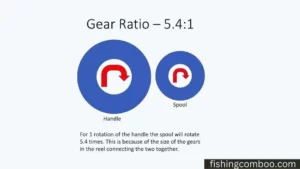
The number of times the spool revolves for every handle turn is the gear ratio of a baitcasting reel. The spool will rotate more quickly as the gear ratio increases.
A high gear ratio is good for fast retrieval but can be difficult to control. For slow retrieval, a low gear ratio is ideal.
Your fishing technique will determine the ideal gear ratio for your baitcasting reel. If you’re fishing in a saltwater environment, it’s important to go with a baitcasting reel with a high gear ratio.
This is because saltwater fish are often fast and aggressive, so you need a reel that can retrieve the line quickly.
If you’re fishing in a freshwater environment, it’s important to go with a baitcasting reel with a low gear ratio. This is because freshwater fish are often slow and docile, so you don’t need a reel that can retrieve the line quickly.
The gear ratio you select is also determined by the type of lure you use. If you’re using a fast-moving lure, you need a high gear ratio reel. A low gear ratio reel is required when using a slow-moving lure.
Commonly used gear ratios are 5.1:1, 6.3:1, and 7.1:1. The 5.1:1 gear ratio is the slowest of the three ratios and is good for fishing with slow-moving lures. The 6.3:1 gear ratio is faster than the 5.1:1 ratio, but it’s still slow enough for fishing with slow-moving lures.
The 7.1:1 gear ratio is the fastest of the three ratios, and it’s good for fishing with fast-moving lures.
So, when buying a baitcasting reel, make sure you pick the one with the right gear ratio for your fishing type.
Handedness
There are both left-handed and right-handed models of baitcasting reels. If you’re a lefty, you must buy a left-handed baitcasting reel. You need to buy a right-handed baitcasting reel if you’re a righty.
It’s important to buy the correct handedness of baitcasting reel because it will be difficult to use a reel that’s not meant for your dominant hand.
When I shifted from a spinning reel to a baitcaster, I mistakenly bought a right-handed reel even though I’m left-handed. The incorrect placement of the spool release button made it very difficult to use. So, make sure you buy the correct handedness of baitcasting reel.
Level Wind System
The level wind system is a feature that’s available in some baitcasting reels. This system helps to evenly distribute the line on the spool as it’s being retrieved.
If you are just starting out, you should get a baitcasting reel with a level wind system. This is because the level wind system will help you avoid backlash and bird’s nests.
When the line becomes entangled within the reel, it is called “backlash.” Bird’s nests are when the line gets tangled around the spool. Both issues can be very annoying and waste valuable time.
Line Capacity
The amount of line that a baitcasting reel can hold is referred to as its “line capacity.” The higher the line capacity, the more line the reel can hold. Selecting a baitcasting reel with an insufficient line capacity will make it difficult to catch the fish you want. A reel with a large line capacity is necessary for catching large fish.
If you’re trying to catch a small fish, you need a low-line capacity reel. Yards are typically used to measure the line capacity.
For example, a baitcasting reel with a line capacity of 10 pounds / 150 yards can hold 10 pounds of line on the spool and 150 yards of line in total.
You should take into account the different diameters of braided and monofilament lines when selecting a baitcasting reel. The monofilament line has a larger diameter than the braided line. That means you can fit less monofilament line on the spool than the braided line.
For example, if you’re using a 20-pound monofilament line, you can fit less of it on the spool than if you’re using a 20-pound braided line.
A braided line is constructed from several strands of thin wire. That’s why it has a smaller diameter than the monofilament line, which is made of a single strand of thick plastic.
Reel Type
There are two types of baitcasting reels: round baitcasting reels and low-profile baitcasting reels.
Low Profile
As the name suggests, low-profile baitcasting reels have a lower profile than round baitcasting reels. That means they’re smaller and lighter. Low-profile baitcasting reels are easier to palm and more comfortable to use for long periods.
The smaller size also makes them less likely to become entangled in foliage. Low-profile baitcasting reels are good for fishing in open water and around structures.
Round Baitcasting Reel
Round baitcasting reels are the traditional type of baitcasting reel. They are larger and heavier than baitcasting reels with low profiles. They have a larger spool so that they can hold more lines. They’re also less likely to get overloaded with lines because of their larger spool size.
Round baitcasting reels are good for fishing in open water and around structures. They’re also good for fishing in heavy cover because of their larger size. Round reels have larger line capacities, so you can use them if you’re trying to catch a big fish.
Anti Reverse
The anti-reverse is a feature that’s available in some baitcasting reels. This safety mechanism prevents the reel from spinning in reverse. That means you can use the reel to fight a fish without allowing it to malfunction. Some baitcasting reels have an anti-reverse lever, while others have an anti-reverse switch.
Comfortability
As fishing is an outdoor activity, you need to be comfortable when you’re using the baitcasting reel. That’s why it’s important to choose a baitcasting reel that’s comfortable to use.
You should pick a reel that is comfortable in terms of size and weight. The baitcasting reel shouldn’t be too heavy as you have to cast multiple times in a single trip. The reel also shouldn’t be too small, making it difficult to use.
In case if you’re not comfortable, you can’t cast with higher accuracy. Lower the casting accuracy in fishing means you can’t catch the fish. So, it’s necessary to be comfortable with the baitcasting reel.
Match the Reel to the Rod
Once you’ve chosen the baitcasting reel, you need to match it to the rod. I always make sure to match my baitcasting reel to my rod. I believe it is essential to strike a balance between the two. That way, you can have a more comfortable and enjoyable fishing experience.
I usually go for a medium-heavy rod with fast action. That way, I can cast my lure with more accuracy and power. I also like to have a baitcasting reel that’s comfortable to use and has a good drag system.
I believe it is important to take your time selecting the baitcasting reel that best suits your needs. That way, you can enjoy your fishing trip and catch more fish!
Pricing
It’s important to think about how much the baitcasting reel costs. Baitcasting reels can cost anywhere between $30 and $200.
The most expensive baitcasting reels are usually made of high-quality materials and have features that make them more durable and easier to use.
I suggest selecting a baitcasting reel that costs around $60 if you are just beginning. This way, you can get a high-quality reel without breaking the bank.
You can upgrade to a more expensive reel as you gain experience. But I think getting a good quality reel that’s comfortable to use and has the features you need is important.
Final Words
I hope this guide has helped you understand how to choose a baitcasting reel. Remember to consider the factors I’ve mentioned when choosing your reel. That way, you can have a more enjoyable and successful fishing experience!
If you have any questions, please submit them in the comments section below. I’ll gladly help.



